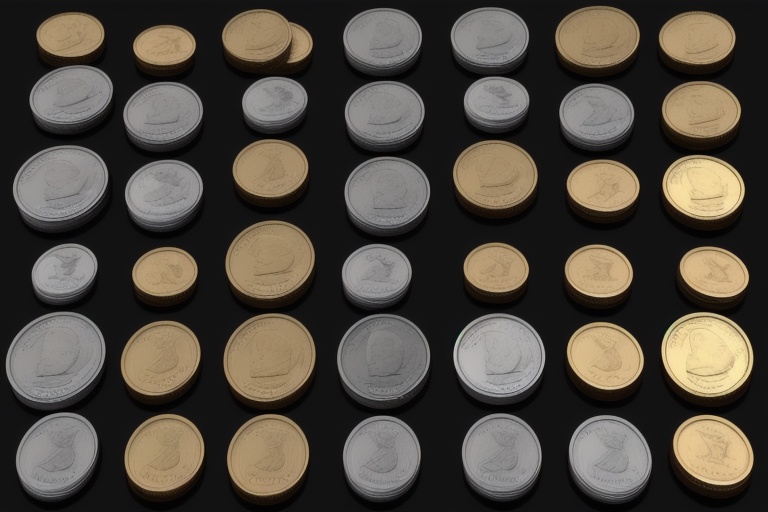Coin collecting is a pursuit that connects people with history, economics, and art, all through the fascinating world of numismatics. In particular, 1964 dimes represent a significant era in coinage history and remain a topic of great interest among collectors and enthusiasts. This comprehensive guide will take you through everything you need to know about the value of 1964 dimes, spanning various mints and conditions.
Coin collecting is a pursuit that connects people with history, economics, and art, all through the fascinating world of numismatics. In particular, 1964 dimes represent a significant era in coinage history and remain a topic of great interest among collectors and enthusiasts. This comprehensive guide will take you through everything you need to know about the value of 1964 dimes, spanning various mints and conditions.
Understanding the 1964 Dime
The Roosevelt dime series, which began in 1946 to honor President Franklin D. Roosevelt, saw a remarkable year in 1964. The dime’s specifications are as follows:
- Mints: Philadelphia (no mintmark), Denver (D)
- Total Mintage: Over 2.2 billion pieces combined
- Designers: Obverse and Reverse by John R. Sinnock
- Composition: 90% silver, 10% copper
- Diameter: 17.91 mm
- Weight: 2.5 grams
- Thickness: 1.3 mm
- Actual Silver Weight (ASW): 0.0723 oz
The Value Spectrum of 1964 Dimes
The worth of these dimes is influenced by several factors including mint marks, condition (grade), and special designations, such as proof or Special Mint Set (SMS) status.
Philadelphia (No Mintmark) Dimes
Though produced in abundant numbers, with over 924 million struck, the value of Philadelphia dimes is primarily tied to their silver content. Depending on their condition, values range modestly for circulated coins, but for those in uncirculated condition with higher grades — MS 65 through MS 67 — prices can be significantly higher. Exceptional pieces like an MS 68 grade can command several hundred dollars at auction.
Denver-Struck Dimes
The "D" mintmark on Denver dimes identifies over 1.3 billion units minted. While they also hold value based on silver content, flawless examples with full bands on the torch — indicating a sharp strike — can fetch much higher premiums. MS 67 grades may sell for around $30, climbing substantially for MS 68 full band dimes. In fact, one such coin brought nearly $6,500 in a 2018 auction.
Special Mint Set (SMS) Dimes
The SMS dimes, with their glossy finish and sharp details, were minted in significantly lower numbers, making them highly collectible. An SP68 grade can easily reach $20,000, while even an SP64 can value at $4,000 due to the rarity of these special sets.
Proof Dimes
Struck in larger quantities, proof dimes from 1964 were produced nearly 4 million times but still have unique value propositions. Proof coins with cameo or deep cameo finishes are especially desirable, and their values can reflect this, with perfect PR70 deep camos reaching upwards of $5,000.
Rarity and Error Dimes
Collectors are always on the lookout for rare variations and error coins. The 1964 series offers opportunities to find such treasures, particularly with the Denver “D” double die error, where some reverse letters struck twice may be apparent. This error alone can boost a coin’s value to around $160 for an MS 65 grade.
Historical Significance
The significance of 1964 dimes extends beyond their material worth. These coins were the last dimes struck for circulation with a silver composition, marking the end of an era. The subsequent Coinage Act of 1965 would change the landscape of American coinage forever, making the 1964 dimes highly notable.
Silver Content and Identification
To ascertain if a dime from 1964 is made of silver, inspecting the coin's edge for solid silver stripes is a reliable method. All 1964 American dimes are indeed composed of 90% silver, a fact that remains central to their valuation.
Grading and Professional Valuation
Given the wide range of values associated with the 1964 dime, accurate grading is essential. Professional grading services can evaluate a coin's condition and assign a grade, which is an integral part of determining its market value. Collectors are advised to seek professional assessment, especially when rare errors or variations are suspected.
Coin Collecting Journey
Whether you're embarking on your coin collecting journey or are a seasoned numismatist, understanding the historic and numismatic value of 1964 dimes is crucial. With their rich narrative and potential for exceptional rarity, these coins can be both a passion project and a wise investment.
In summary, 1964 dimes provide a window into a pivotal moment in American numismatics. Their value is multifaceted, encompassing silver content, mintages, condition, and outliers with errors or special designations. As the coin collecting community grows, the allure of these dimes continues to captivate individuals eager to own a piece of history. Join us as we unveil more insights into the world of coin collecting in future articles; the hunt for hidden gems in your pocket change or collection is just beginning. Happy collecting!
Information for this article was gathered from the following source.

